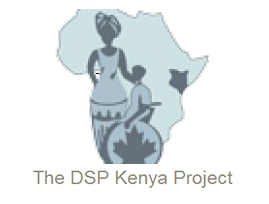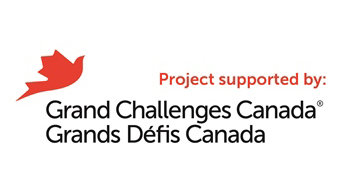4.3.1 – Mental Functions
Many
children living with HIV have problems with learning and concentration,
especially if they did not start ART at an early age. These problems
can occur as the virus gets into the brain tissue of infants and causes
inflammation and destruction of neural tissue. This damage to the
central nervous system can be irreversible. Children in resource-poor
settings who are infected with HIV are at great risk for developing HIV
encephalopathy.
The presentation of children with
neurologic involvement varies significantly and is influenced by social
as well as clinical differences. If possible children should be referred to a psychologist and occupational therapist.
Some of the clinical signs which have been seen in children with neurocognitive problems include:
- Microcephaly
- Cognitive delays
- Cerebral atrophy
- Calcification of the basal ganglia
- Delay or loss of developmental milestones
- Abnormal reflexes
- Electroencephalogram (EEG) abnormalities.
Additional factors which may contribute to a child’s learning or behavioural problems include:
- Secondary infections
- Poor prenatal care
- Repeated hospitalizations
- Social isolation
- Neglect and lack of stimulation at home
- Malnutrition e.g. marasmus and kwashiorkor, micronutrient deficiencies
- Lack of structure and security at home
- Side effects of medication
- Maternal substance abuse (including alcohol abuse)
In
children who are not infected perinatally (e.g., those who are infected
through blood transfusions or sexually active teenagers), the cognitive
problems tend to be similar to those experienced by adults.
Potential causes of these impairments and rehabilitation interventions are shown in the table below.
Table 4.3.1: Clinical Aspects of Mental Functions
| Impairments |
Possible Etiologies |
Rehabilitation Interventions5 |
| Developmental delay |
HIV encephalopathy
Other infections e.g., cytomegalovirus, meningitis |
Slow acquisition of developmental milestones in babies and toddlers
- Consider developmental testing using standardized psychological measures
- Use
infant stimulation programs using bright, interesting toys or household
objects to stimulate the infant to participate in play
- Provide
play materials that stimulate a variety of senses (e.g., toys that feel
different; toys that roll, bounce, and make noises; water and sand
play)
- Provide a variety of play opportunities
both within the home and in settings where the child is exposed to
other people, environments, and situations (e.g., playgroup or creche)
- Consider enrollment in crèche, early childhood development centres or pre-school to provide opportunities for peer modelling, as well as rest for parents
|
| Increased or decreased muscle tone |
Basal ganglia calcification
HIV encephalopathy |
- Encourage active movement of affected muscles using functional activities through full range of movement
|
Poor or absent expressive language (speech) |
HIV encephalopathy
Hearing loss from chronic ear infections
Lack of stimulation
|
- Administer standardized language measures
- Provide many speech examples by talking to the baby/child about everything around you
- Pause in conversations with the baby/child to allow her/him to respond with some kind of verbal utterance
- Provide names for everything and encourage the baby/child to copy the sounds you make
- Do
not anticipate the baby/child's every wish. Allow the baby/child to use
what language she/he does have (e.g., if the baby/child gestures and
grunts, do not immediately hand the baby/child what she/he wants; first
try to encourage her/him to use a word or sound)
- Expand
on the baby/child's use of words (e.g., when the baby/child says
"juice," the caregiver can say "Do you want some juice?")
- As the baby/child learns words, ask open-ended questions instead of those requiring only a yes or no response
- Look at picture books or magazines with the baby/child and talk about the pictures
- Sing songs and play games with the baby/child
- Assess for hearing loss, a common cause of language delay in children
- Initiate assessment by a speech-language pathologist
|
| Poor memory |
HIV encephalopathy
Fatigue |
Poor memory in children
- Conduct neuropsychological assessment
- Repeat instructions and verbal reminders
- Present materials in various forms (e.g., visual, verbal)
- Support verbal information with written information
- Use
cues to help remember (e.g., use of a watch alarm to remind child when
to take pills). However it is important to determine whether or
not the child is ready for this step and depends upon his or her
cognitive abilities and other variables
- Use lists when more than one thing is required of the child
- Use a daily diary book containing all important information for the day (for older children)
- Give
the child simple, one-step instructions and ask the child to repeat the
directions to be certain that he or she has understood the instructions
accurately
|
| Poor learning and/or attention |
Pre-existing learning problems
HIV encephalopathy
Fatigue
Pain
Fatigue
Attention deficit disorder |
- Administer standardized tests
- Seek remedial classes or extra help in areas of difficulty
- Set
aside specific time (e.g., 30 minutes every night after dinner) to work
on homework and projects in a quiet environment (if there is no
homework, the child can use the time for a quiet activity such as
reading)
- Set short-term goals and use reward system when the child reaches goals (e.g., stickers, stars)
- Revise learned material frequently
- Have
preferential seating to avoid distractions (e.g., away from windows,
doors, and noisy classmates and at the front of the class near the
teacher)
- Allow for sufficient rest times during the day to ensure maximum alertness and ability to participate in the school day
|
| Poor visuomotor skills |
HIV
Lack of stimulation |
- Allow the child to draw and color
- Practice cutting out shapes with scissors
- Do puzzles with the child
- Look at books and talk about the colors and shapes in the pictures
|
| Depression or behavioural problems e.g. aggression and fighting |
HIV
Side effects of medication
Social problems at home and /or school |
- Provide a safe place for children to talk
- Refer for psychological assessment and counselling
|
5Choice of rehabilitation interventions will depend on patient assessment and available resources.

 Previous Page
Previous Page




